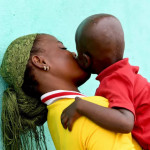A British chemical engineer has designed a thin nipple shield that he claims can filter HIV out of the breast milk of HIV-positive mothers, according to a report by the BBC News.
HIV is present in breast milk and can be transmitted from HIV-positive women to their newborns. Unfortunately, formula is not always a practical replacement in developing countries as it is expensive, stigmatizing for the mother, and frequently a source of disease when mixed with local sources of contaminated water.
To address this problem, a team headed by Stephen Gerrard from Cambridge University designed a nipple shield. They first soaked a very thin cotton pad with sodium dodecyl sulphate (SDS), a detergent used by scientists to break down proteins for analysis. They then joined the cotton pad to a traditional nipple shield made of a very thin layer of silicone. SDS, Gerrard says, deactivates HIV in breast milk as it passes through the cotton layer.
Gerrard’s design was presented this month at the International Development Design Summit in Cambridge, Massachusetts. The summit brings experts together for one month to develop products that will aid people in developing nations.
Gerrard says his group has some concerns, notably that the shield could readily identify a woman as HIV positive. To counter that concern, he says, “We’re considering marketing it as a way to deliver medicines or micronutrient supplements to aid breast feeding. For example, they can also be used for iron or iodine deficiency.”
Advertisement
Advertisement
Advertisement






1 Comment
1 Comment